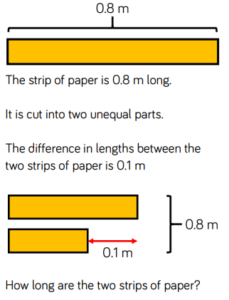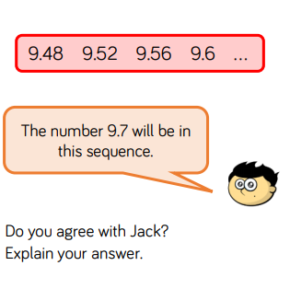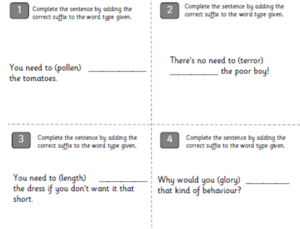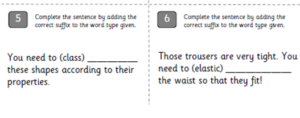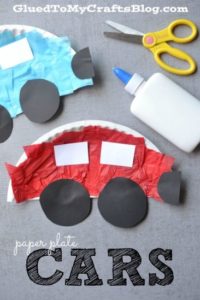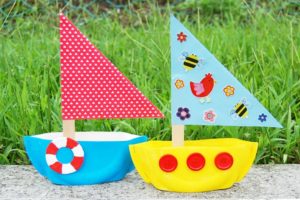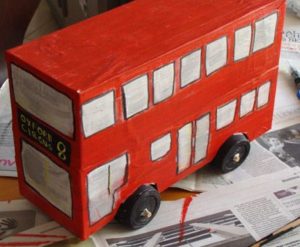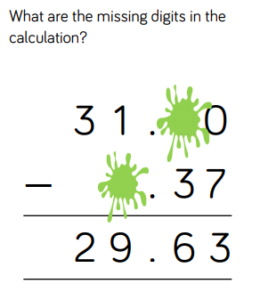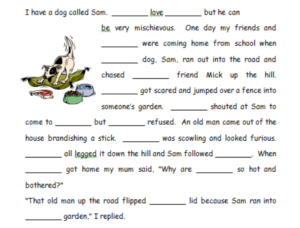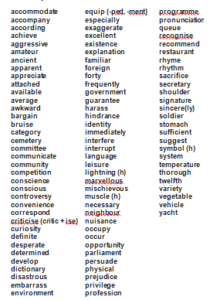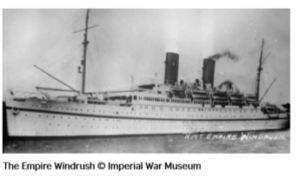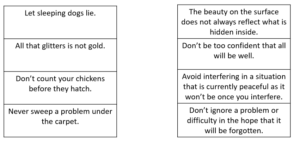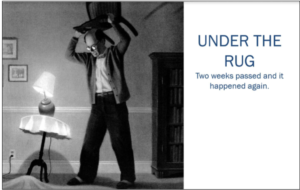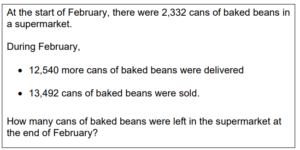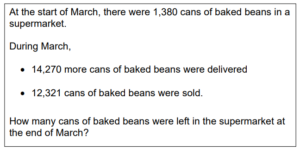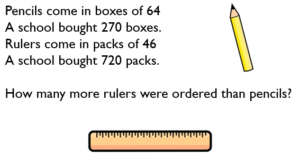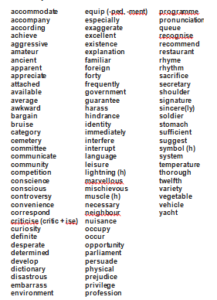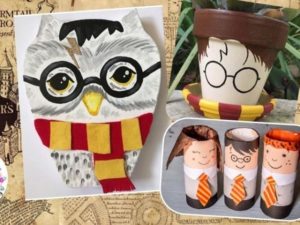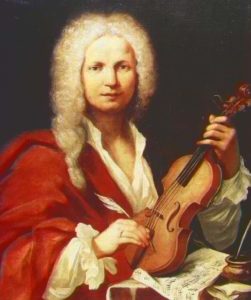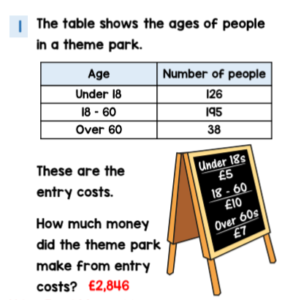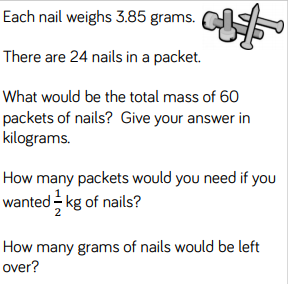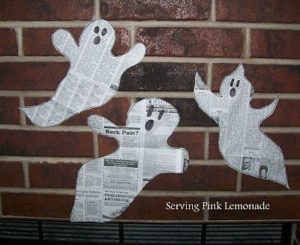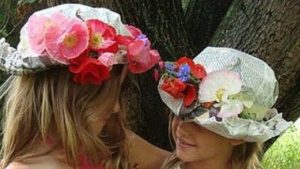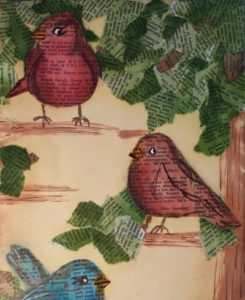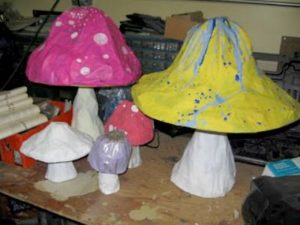Home Learning Week Beginning 26th June, 2020
Hello Year 5,
We’re really looking forward to seeing you face-to-face, those of you who are attending the ‘keeping in touch’ sessions at school. The sessions start the week beginning 29th June. If you want, you could bring in some of the home learning you have been doing or anything you are really proud of, to share.
Don’t forget to email through your one favourite piece of work so that we can see all of the great learning you have done.
This week’s tasks are as follows:
Reading and Writing:
Reading and writing home learning for the week beginning Monday 29th June
For your English work this week you will once again be using the Oaks National Academy website. The focus is on biographical writing. Remember a biography is when someone writes about another person’s life. The first 2 lessons will develop your comprehension skills where you will read and answer questions individuals who have influenced the world. Lessons 3 to 5 will then help you practise some key writing skills before applying them to your own short biography.
Reading
Please continue to ensure that you are reading an age appropriate book for at least 20 minutes each day. It is so important to help you build your vocabulary and develop your fluency and stamina!
Lesson 1: Reading comprehension
https://classroom.thenational.academy/lessons/read-example-text-reading-comprehension-983dac
Lesson 2: Reading comprehension
https://classroom.thenational.academy/lessons/read-example-text-reading-comprehension-2443eb
Writing
Lesson 3: To identify the features of a text
https://classroom.thenational.academy/lessons/read-the-example-and-identify-key-features-e2f1e2
Lesson 4: Using parenthesis accurately in your writing.
https://classroom.thenational.academy/lessons/spag-focus-b2bdf1
Lesson 5: To plan and write a biography.
CHALLENGE:
If you would like an extra challenge for your writing this week, please complete the activities below using this image as a stimulus:
Task 1: Question time
The first moments of a turtle’s life are critically important for its survival chances. Why do you think this is the case?
Why is it that female turtles lay their eggs on the beach?
Can you think of any other animals that live in the water and on the land?
What are the differences between amphibians and reptiles? Which group does the turtle belong to?
Task 2: Continue to story
She blinked her sleepy eyes as she took in her first sights of the world around her. With an almighty effort she pushed back her legs, breaking away another tiny fragment of her shell.
Soon, she would be free. Soon, she would have to tackle her next enormous challenge. It wasn’t going to be easy. Her epic journey was only just beginning…
Task 3: Perfect picture!
Soon, the turtle will enter the ocean. Can you draw or describe the moment when the turtle first reaches the water?
Maths:
Task 1: 20 minutes of times tables work every day. Use TT Rockstars to help you practise.
Task 2: One arithmetic task and one times tables task on Sumdog.
Task 3: There are 2 activities set on My Maths to complete. Use your login details to get onto the website.
Task 4:
Taken from Oak National Academy
Lesson 1 – complete the quiz from the previous lesson
Watch the video and complete tasks given within it
Complete the activities based on the lesson
Lesson 2 – complete the quiz from the previous lesson
Watch the video and complete tasks given within it
Complete the activities based on the lesson
Lesson 3 – complete the quiz from the previous lesson
Watch the video and complete tasks given within it
Complete the activities based on the lesson
Lesson 4 – complete the quiz from the previous lesson
Watch the video and complete tasks given within it
Complete the activities based on the lesson
Lesson 5 – complete the quiz from the previous lesson
Watch the video and complete tasks given within it
Complete the activities based on the lesson
Task 5:
Taken from HIAS problem solving:
Challenges:
From White Rose Y5 Maths:
Spellings and Grammar:
Task 1: Spelling task on Sumdog.
Task 2: Grammar task on Sumdog.
Task 3:
To use the correct suffixes.
To revise grammar rules.
Continue to learn the spellings on the Year 5/6 Spelling List – do a few at a time.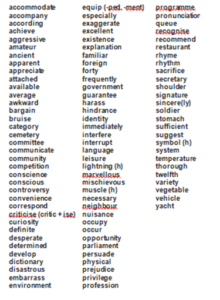
Family Science Activity
Giant Bubbles
https://www.rigb.org/families/experimental/giant-bubbles – watch the video
- Make a home-bubble mixture and wands. Use them to look more closely at the characteristics and behaviour of soap bubbles.
- ExpeRiment with different shapes and sizes of bubbles and see what you can and cannot control about bubbles. Learn how to make giant bubbles and find out why bubbles are usually round.
- Learn how to make giant bubbles and find out why bubbles are usually round.
https://www.rigb.org/docs/giantbubbles_infosheet_0_0.pdf – details on the information sheet.
You will need:
- Good quality washing up liquid
- Water
- Glycerin (optional)
- Plastic tub or other container for bubble mixture
- Measuring jug (optional)
- Various things with holes in them for blowing bubbles with. Watch the video for ideas. Straws, pipe cleaners, paperclips, coat hangers, cookie cutters and cake tins with removable bottoms are all particularly good.
- For giant bubbles: wooden spoons (or other sticks), a couple of metres of string and a small weight you can thread through it, like a metal key ring or nut.
What to do:
A mixture we found that works is 1 litre of water, 100ml of washing up liquid and 30 ml (2 tablespoons) of glycerin. Blow some bubbles!
Put a straw into your bubble solution and try blowing gently into the liquid. You should be able to make a lot of bubbles very quickly. Then dip one end of a straw into the solution, take it out and blow gently through the other end. See if you can control the size of bubble you can blow out of the straw.
Try making bubbles using things with bigger holes, like a paperclip or pipe cleaner bent into a circle. Try poking a dry finger into a bubble, then try the same thing after dipping your finger in bubble solution.
Try making bubbles inside bubbles by poking a straw dipped in bubble solution into an existing bubble and blowing again.
Try out objects with different shaped holes, like cookie cutters or pipe cleaners bent into other shapes. Try objects with really big holes, like a coat hanger or a cake baking tin with its bottom removed. Try making giant bubbles with the special wand we show you how to make in the video.
Going Further:
- You can experiment with your bubble mixture and giant bubble wand to see just how big you can get your bubbles to be. There are lots of different bubble mixture recipes on the internet, just search for “soap bubble recipe”.
- You could try making two or three of them and comparing how good the bubbles they make are.
Topic – India
L.O: To research the key features of a contrasting country.
As part of our country study we would have been researching India, ready for the carnival. Over the coming weeks we will give you areas of research for you to find details and put them together in an interesting way of your choice.
Over the next week, please start to research these NEW areas:
Sports associated with India/ originating in India. Famous Indian sports personalities.
Wildlife in India – include the habitats, food preferences and drawings/ pictures of the wildlife.
Websites to help:
https://theculturetrip.com/asia/india/articles/the-11-most-famous-indian-sportspersons/
https://www.topendsports.com/world/countries/india.htm
https://wiki.kidzsearch.com/wiki/Sports_in_India
http://www.walkthroughindia.com/wildlife/top-10-wild-animals-of-india/
https://www.kidzworld.com/article/28152-animals-of-india/
https://www.teachindiaproject.org/12_Animals_From_India.htm
Music
Go to the website below and watch Naomi Wilkinson’s video about Hans Zimmer
https://www.bbc.co.uk/teach/ten-pieces/classical-music-hans-zimmer-earth/zh4k382
Why is Hans Zimmer considered a musical trail blazer?
Now listen to the whole piece in the second video.
Zimmer tells us to,
‘Do what you wanna do with it!’
How can you ‘play and get creative’ with this piece?
R.E.
Our school patronal feast day takes place on Sunday 28th June. In order to prepare for this special time of the year, please choose ONE of the following activities in order to learn more about St. Peter…
- Write a diary entry as St. Peter, when he escaped from prison. Describe how he felt when the Lord sent an angel to free him from the jail that Herod had cruelly locked him up in. How did they get out of the prison?
- Jesus told Peter, ‘I will give you the keys to the Kingdom of Heaven’. Design the keys and include as many symbols as you can to represent St. Peter and why he was so special. What would the keys be made of?
- Jesus said to Peter, ‘You are a rock, and on this rock I will build my church’. Could you paint or decorate a stone or pebble, to show ways in which to build God’s church? (e.g. by spreading love, faith and Good News).
- Create a selection of short prayers to ask for God’s guidance during the global pandemic. How could we demonstrate the courage, faith and commitment that was demonstrated by St. Peter, as we work to support others?
- Take a look at the St. Peter’s logo on our school website. Can you re-design the crest so it reflects the qualities of St. Peter? (e.g. trust, hope, responsibility). Why did Jesus say ‘feed my lambs’? How might St. Peter ask us to continue God’s work on earth?
- Use the internet to research St. Peter – can you make a fact file about our school saint? Which key words might you use as part of your factual information page? Were there any articles about St. Peter that particularly interested or surprised you?
Art
Art Challenge: The Great Getaway! TRANSPORT
The title for your art this week is The Great Getaway! TRANSPORT. This can take the form of a drawing, a painting, a sculpture, a collage or anything else that you would like to create. As always, I’m sure you will impress me with your creativity!
Here are some ideas:
CHALLENGE: Design your own vehicle, maybe one that flies and can float on water!
However, if this doesn’t appeal to you then you can still send any other art work to me and I will post that on the Blog too.
Please email your artwork to me:
n.pearson@stpeterswaterlooville.hants.sch.uk
Thank you
Keep creating and keep safe!
Mrs Pearson
Art activity – Week beginning 19.6.20
Art Challenge Feast Days
We have two important Feast Days in our Church calendar for June. The 19th June is the Feast of the Sacred Heart and 29th June is the Feast Day of St Peter and St Paul.
For your art challenge this week I would you to do a creation linked to either of these Feast Days.
The Sacred Heart of Jesus is an object of devotion and always falls 19 days after Pentecost.
As you know, St Peter was given the ‘keys to heaven’ by Jesus and was our first Pope and in Matthew Ch16v18 Jesus said ‘And I tell you, you are Peter, and on this rock I will build my church.’ He is also the Patron St of fishermen. St Paul changed from not believing in Christianity to spreading the word through the letters that he wrote. Naturally, he is the Patron St of writers.
Ideas to inspire you:
Alternatively, you could do artwork to do with the Patron St that you have been linked to in school (England St George; Scotland St Andrew; Ireland St Patrick: Wales St David), or the Patron St of your home country.
However, if this doesn’t appeal to you, then you can still send any other art work to me and I will post that on the Blog too.
Please email your artwork to me:
n.pearson@stpeterswaterlooville.hants.sch.uk
Thank you.
Home Learning Week Beginning 19th June, 2020
Hello Year 5,
It’s been lovely to catch up with most of you and find out what you have been up to. It’s been very odd teaching again but without our Year 5 classes. We have been teaching different year groups, who have been lovely, but we still miss seeing your smiley faces and listening to your stories.
This half term we would have been studying ‘coasts’ as our topic. If any of you do manage to get to the beach, have a look for signs or erosion around the area. What defences have been put in place to stop the erosion of the beach – groynes, sea walls, gabions/ rock armour or a mixture of defences? If you can see a headland jutting into the sea, are there caves formed; any arches, stacks or stumps? Has a bay been created?
Don’t forget to email through your one favourite piece of work so that we can see all of the great learning you have done.
This week’s tasks are as follows:
Reading and Writing:
For your English work this week you will once again be using the Oaks National Academy website. The focus is on persuasive writing so try and think back to all of the great persuasive skills you learned in Year 5 when you wrote your own persuasive speeches on your favourite superhero and when you tried to persuade tourists to visit Pandora. Good luck!
Reading
Please continue to ensure that you are reading an age appropriate book for at least 20 minutes each day. It is so important to help you build your vocabulary and develop your fluency and stamina!
Lesson 1: To infer from the text
https://classroom.thenational.academy/lessons/persuasive-letter-reading-comprehension-inference
Lesson 2: Reading comprehension – to clarify word meaning
https://classroom.thenational.academy/lessons/persuasive-letter-reading-comprehension-word-meaning
Writing
Lesson 3: To identify the features of a text
https://classroom.thenational.academy/lessons/persuasive-letter-identifying-the-features-of-a-text
Lesson 4: Grammar focus – using a list of 3 in a sentence.
https://classroom.thenational.academy/lessons/persuasive-letter-spag-focus-list-of-three
Lesson 5: Writing a persuasive letter.
https://classroom.thenational.academy/lessons/persuasive-letter-write-a-persuasive-letter
Extra challenge:
Plan a broadcast
Imagine that you have the chance to set up a new club for children. This could be a ‘lockdown’ club or a club that could take place when we all return to school. A local radio show has given you 3 minutes to persuade your audience that the club is a good idea.
Plan the content of your broadcast. Make sure you give some good reasons why the club should be set up, a range of persuasive language and strong conjunctions and connectives to link your points together.
Rehearse the broadcast. Think carefully about the expression in your voice, the speed at which you present and maintain good eye contact with your audience.
Please feel free to email your persuasive recordings to our class email page.
Maths:
Task 1: 20 minutes of times tables work every day. Use TT Rockstars to help you practise.
Task 2: Arithmetic task and times tables task on Sumdog.
Task 3: There are 2 activities set on My Maths to complete. Use your login details to get onto the website.
Task 4:
Taken from Oak National Academy
Lesson 1 – watch the video and complete tasks given within it
https://classroom.thenational.academy/lessons/to-solve-problems-related-to-decimals/activities/2
Complete the activities based on the lesson
https://classroom.thenational.academy/lessons/to-solve-problems-related-to-decimals/activities/3
Lesson 2 – complete the quiz from the previous lesson
https://classroom.thenational.academy/lessons/to-investigate-multiplying-decimals/activities/1
Watch the video and complete tasks given within it
https://classroom.thenational.academy/lessons/to-investigate-multiplying-decimals/activities/2
Complete the activities based on the lesson
https://classroom.thenational.academy/lessons/to-investigate-multiplying-decimals/activities/3
Lesson 3 – complete the quiz from the previous lesson
https://classroom.thenational.academy/lessons/to-multiply-decimals-by-whole-numbers/activities/1
Watch the video and complete tasks given within it
https://classroom.thenational.academy/lessons/to-multiply-decimals-by-whole-numbers/activities/2
Complete the activities based on the lesson
https://classroom.thenational.academy/lessons/to-multiply-decimals-by-whole-numbers/activities/3
Lesson 4 – complete the quiz from the previous lesson
Watch the video and complete tasks given within it
Complete the activities based on the lesson
Task 5:
Taken from HIAS problem solving:
Challenges:
From White Rose Y5 Maths:
Spellings and Grammar:
Task 1: Spelling task on Sumdog.
Task 2: Grammar task on Sumdog.
Task 3:
To practise using pronouns correctly.
What is a pronoun?
Can you think of some examples?
What is the difference between singular and plural pronouns?
Continue to learn the spellings on the Year 5/6 Spelling List – do a few at a time.
Family Science Activity
Balloon Car Racers
https://www.rigb.org/families/experimental/balloon-car-racers – to watch the video
The activity – Make cars which are propelled by balloon power.
ExpeRiment with designs and see what factors affect how fast or how far your car goes.
Learn how a balloon car works just like a rocket.
https://www.rigb.org/docs/ballooncarracers_infosheet_1_1.pdf – to view the information sheet
What to do:
- Make a balloon car based on the instructions Mark gives in the video.
- Decide how you will judge what makes a ‘good’ car – is it how far it goes or how fast it goes?
- Investigate what happens if you have bigger or smaller wheels (you can use other types of lids or make wheels from cardboard and use blu-tac or glue to attach them to the kebab skewers).
- Investigate what happens if you change the design of your car in other ways – you can watch the video again for inspiration for other designs.
Going further challenge:
- Measure how far your car travels using a tape measure.
- Time how fast your car travels ½ a metre – would double the speed be the time that your car would travel 1 metre? Test it out.
- You can find the speed of your car in metres per second using a stopclock and a tape measure: Measure the distance the car travels (in metres) then dividing that distance by the time it took to travel (in seconds).
Topic – The Windrush
Watch the BBC Newsround clip describing the arrival of the Empire Windrush.
https://www.bbc.co.uk/newsround/43793769
Background
Between 1948 and 1970 nearly half a million people left their homes in the West Indies to live in Britain. The West Indies consists of more than 20 islands in the Caribbean, including Jamaica, Barbados and Trinidad. These people changed the face of modern Britain. They were all British citizens and, although they had never lived in Britain before, they had the right to enter, work and settle here if they wanted to.
West Indians came to Britain for many different reasons. Some were seeking better opportunities for themselves and their children. Some came to work for a while, save money and return home. Some had been recruited because Britain was short of workers to run the transport system, postal service and hospitals. Other West Indians were returning soldiers who had fought for Britain during the Second World War (1939-1945).
Not all white Britons welcomed the black Britons. Many West Indians found that the colour of their skins provoked unfriendly reactions. For example, despite the desperate shortage of labour, some still found it difficult to get good jobs. Often they were forced to accept jobs which they were over-qualified for, or they were paid less than other white workers.
West Indians also experienced difficulties in finding suitable places to live. Since few had much money, they had to find cheap housing to rent near to their workplace. This was often in the poor inner cities. Even if they did have enough money to rent better quality housing, many had to face the fact that some landlords refused to rent to black people. They would be confronted with insulting signs in house windows that said ‘Rooms to Let: No dogs, no coloureds’. This meant that a lot of West Indians were forced to rent homes in the most rundown areas.
In 1958, in areas where larger numbers of West Indians lived, there were outbreaks of violence against them. In particular, in Nottingham and London mobs of white people attacked black people in the streets, smashing and burning their homes.
West Indians had been invited to come to Britain, so they also felt that it was their home too. To be discriminated against was a shock which they had not been prepared for. Some returned to the West Indies, but many remained – despite the difficulties they faced. They have worked hard and made a contribution to British life.
Jamaican village scene c.1950
A large Jamaican city c.1950
City Square, Leeds. 1949
Oxford Street, London. 1960’s
Task 1:
Imagine you are one of the passengers who came to live in Britain on the Windrush. Write a letter home to your family in the West Indies describing your arrival in Britain (expectation/ reality), how people are treating you (good / bad) and what Britain is like compared to home (use the photographs to help).
Life for Caribbean Immigrants Today
Today, their descendents and new immigrants to the country can still suffer the effects of discrimination and racism, which may not always be obvious. For example, they may find it more difficult to get jobs or receive the same standards of justice as white British people.
The Windrush Scandal
Some of the effects of racism are more obvious. Recently the British government was forced to apologise for what has been called the ‘Windrush Scandal’, in which people who have lived in Britain ever since immigrating decades ago have been wrongly arrested, denied legal rights, threatened with deportation and sometimes even wrongly deported from the UK by the Home Office.
Task 2:
Around the body outline, describe how you would feel if you have lived in Britain for decades but still did not have the same rights as every other British person and the possibility of deportation back to the West Indies.
Topic – India
L.O: To research the key features of a contrasting country.
As part of our country study we would have been researching India, ready for the carnival. Over the coming weeks we will give you areas of research for you to find details and put them together in an interesting way of your choice.
Over the next week, please continue to research these NEW areas:
The culture of India – music, dancing, art food…
The religions followed in India – different religions and the way they are followed.
Any festivals celebrated in India – some festivals may have religious links.
Websites to help:
https://www.kids-world-travel-guide.com/india-for-kids.html
https://www.bbc.co.uk/bitesize/clips/z4fr87h
https://kids.kiddle.co/Indian_religions
https://parenting.firstcry.com/articles/15-popular-festivals-of-india-interesting-facts-for-kids/
Music
Go to the website below and watch Naomi Wilkinson’s video about Grazyna Bacewicz.
https://www.bbc.co.uk/teach/ten-pieces/classical-music-grazyna-bacewicz-overture/zf2k382
|
Grażyna Bacewicz learnt the violin and the piano as a child – and, throughout her life, she enjoyed composing music for both instruments, including piano sonatas and seven violin concertos.
www.bbc.co.uk
|
Why was Grazyna Bacewicz considered a musical trail blazer?
Now listen to the whole piece in the second video. Can you hear the morse code pattern v …- for victory?
Why not try creating your own secretive rhythms
eg. This is top secret.
Don’t tell a soul.
Problems with the English webpage?
For those of you who have struggled with the first website, please try clicking on this copy of the web address:
https://mrsgraveswebsite.weebly.com/uploads/1/2/6/8/12686140/the_mysteries_of_harris_burdick.pdf
Hope this helps.
Home learning Week beginning 15th June 2020
Hello Year 5,
We hope you have had an enjoyable week. Below you will find all of your home learning activities for this week – we hope you enjoy completing them. Don’t forget to email through your favourite piece of work so that we can see all of the great learning you have done.
This week’s tasks are as follows:
The Chronicles of Harris Burdick – Reading and Writing Unit
This sequence is developed around the two texts: The Mysteries of Harris Burdick by Chris Van Allsburg and an extract from The Chronicles of Harris Burdick. Both texts are available online and can be found using the following links:
https://mrsgraveswebsite.weebly.com/uploads/1/2/6/8/12686140/the_mysteries_of_harris _burdick.pdf
Lesson 1: Response to Reading
Task 1: Explore the Mystery of Harris Burdick. Websites and PPTs are available at: https://mrsgraveswebsite.weebly.com/uploads/1/2/6/8/12686140/the_mysteries_of_harris _burdick.pdf
http://www.houghtonmifflinbooks.com/features/harrisburdick/
Task 2: Read the introduction letter (below) As you read make notes:
Is there any vocabulary you don’t understand?
Do you have any questions?
How does it make you feel?
Answer the following questions:
Q1: Who was Harris Burdick?
Q2: How many stories did he say he had written?
Q3: How does the introduction letter affect the way we read the book?
Introduction
I first saw the drawings in this book a year ago, in the house of a man named Peter Wenders. Though Mr. Wenders is retired now, he once worked for a children’s book publisher, choosing the stories and pictures that would be turned into books. Thirty years ago a man called at Peter Wenders’ office, introducing himself as Harris Burdick. Mr. Burdick explained that he had written fourteen stories and had drawn many pictures for each one. He’d brought with him just one drawing from each story, to see if Wenders liked his work. Peter Wenders was fascinated by the drawings. He told Burdick he would like to read the stories that went with them as soon as possible. The artist agreed to bring the stories the next morning. He left the fourteen drawings with Wenders. But he did not return the next day. Or the day after that. Harris Burdick was never heard from again. Over the years, Wenders tried to find out who Burdick was and what had happened to him, but he discovered nothing. To this day, Harris Burdick remains a complete mystery. His disappearance is not the only mystery left behind. What were the stories that went with these drawings? There are some clues. Burdick had written a title and caption for each picture. When I told Peter Wenders how difficult it was to look at the drawings and their captions without imagining a story, he smiled and left the room. He returned with a dust covered cardboard box. Inside were dozens of stories, all inspired by the Burdick drawings. They’d been written years ago by Wenders’ children and their friends. I spent the rest of my visit reading these stories. They were remarkable, some bizarre, some funny, some downright scary. In the hope that other children will be inspired by them, the Burdick drawings have been reproduced here for the first time.
Chris Van Allsburg
Lesson 2: Vocabulary
Proverb: a short, well-known saying, stating a general truth or piece of advice
In ‘Under the Rug’, the author uses lots of proverbs to express the advice Grandma continually gives.
Can you match the proverb with the definition?
Challenge:
Can you think of 3 more proverbs that you have come across through your own reading? If not, ask you parents to help you. When you have identified your 3 proverbs you must now write each one in the context of a sentence showing that you can use it correctly.
Lesson 3: Exploring the Writing
Read the extract from ‘Under the Rug’ by Jon Sciezka (below)
The purpose of the writing is to entertain.
What is the effect the writer creates? Do they manage to:
- develop a sequence of events?
- build tension and suspense?
- hint at the relationship between the characters?
How has the writer achieved this?
Collect examples that demonstrate how this has been achieved effectively in the text.
Extract from ‘Under the Rug’
You should always listen to your grandma. It might save a life. Grandmas say a lot of crazy things. Things like . . . Look before you leap. If the shoe fits, wear it. Sit up straight. So you never know what is really good advice and what is just crazy-talk. But grandmas know a lot. You should listen to them. I should have listened to my grandma.
It started on Wednesday, five Wednesdays ago. I know it was Wednesday because Wednesday is sweeping day. Every Wednesday we sweep the house. Grandma sweeps the kitchen. I sweep the living room. At breakfast that morning, five Wednesdays ago, Grandma told me: Hunger is the best sauce. Let sleeping dogs lie. That sweater and bow tie make you look like an old man. I was sweeping and thinking that I like my sweater, I like my bow tie. Which is probably why I forgot the other thing Grandma always says: Never sweep a problem under the rug. I finished sweeping the living room. I put away the dustpan. I was just walking into the kitchen… when I saw the dust bunny under the couch. I swept the dust bunny under the rug. And I didn’t give it another thought until the next Wednesday.
That morning Grandma said: Never say never. Don’t count your chickens before they hatch. What happened to that cake that was on the table? In the living room, I swept up a trail of cake crumbs that disappeared under the rug. I lifted up the rug. The trail led straight to a clump of hair and crumbs and dust and two glowing red eyes that looked very angry. The dust bunny had grown into a Dust Tiger! I dropped the rug. I couldn’t tell Grandma, so I put the end table over the lump in the rug.
That worked sort of okay for about a week. Then the cat food started to disappear. Something got into the garbage under the sink. I tiptoed into the living room. I peeked under the rug. I saw a huge twisted knot of hair, dirt, liver-flavoured Kibbles ‘n Bits and pieces, coffee grounds, orange peels, two chicken bone horns… and those angry red eyes staring hungrily at me. The Dust Tiger had grown into a Dust Devil!
Lesson 4: Grammar Practice and Play
I dropped the rug in a panic.
The lump I had swept under the rug heaved. The lump growled.
I knew I had to take the bull by the horns. I had to strike while the iron was
hot. I had to make hay while the sun was shining.
I dragged the bookcase over and dropped it on the bulge in the rug.
Something squeaked. Something groaned. Then it was quiet. The
bookcase leaned against the wall a bit crooked, but everything was
fine. Everything was fine.
Task 1:
Explain the author’s use of:
1: Repetition
2: Short sentences
Task 2:
Change the underlined sections so that you replace the proverbs with effective alternatives
Task 3: Challenge
Add 3 more sentences:
- Sentence 1 must start with an adverbial phrase (more information about the verb)
- Sentence 2 must contain a semi-colon
- Sentence 3 must contain only 3 words.
Lesson 5: Writing
Continue the story using the image and opening line provided by Harris Burdick.
Challenge:
Once you have completed your short story now write a second from the perspective of the ‘thing’ that was under the rug.
Extra challenge:
You are not allowed to use any word that has the letter ‘d’ in it.
Maths:
Task 1: 20 minutes of times tables work every day. Use TT Rockstars to help you practise.
Task 2: Arithmetic task and times tables task on Sumdog.
Task 3: There are 2 activities set on My Maths to complete. Use your log in details to get onto the website.
Task 4:
Taken from Oak National Academy
Lesson 1 – watch the video and complete tasks given within it
https://classroom.thenational.academy/lessons/decimals-to-represent-decimals/activities/2
Complete the activities based on the lesson
https://classroom.thenational.academy/lessons/decimals-to-represent-decimals/activities/3
Lesson 2 – watch the video and complete tasks given within it
Complete the activities based on the lesson
Lesson 3 – watch the video and complete tasks given within it
Complete the activities based on the lesson
Lesson 4 – watch the video and complete tasks given within it
https://classroom.thenational.academy/lessons/decimals-to-add-decimal-numbers/activities/2
Complete the activities based on the lesson
https://classroom.thenational.academy/lessons/decimals-to-add-decimal-numbers/activities/3
Lesson 5 – watch the video and complete tasks given within it
https://classroom.thenational.academy/lessons/decimals-to-subtract-decimal-numbers/activities/2
Complete the activities based on the lesson
https://classroom.thenational.academy/lessons/decimals-to-subtract-decimal-numbers/activities/3
Task 5:
Taken from HIAS problem solving:
Challenges:
From White Rose Y5 Maths:
From TTS:
Spellings and Grammar:
Task 1: Spelling task on Sumdog.
Task 2: Grammar task on Sumdog.
Task 3:
Write the past tense of these verbs, using –ed and generate a rule.
| Walk
Destroy Trade Hope watch
|
Carry
Listen Expect Inspire Try
|
| hop
tan knit commit hiss tug |
check
prefer grab pull thud trim |
What did you notice about the second set of words?
These verbs need to be changed into irregular past tense verbs:
| bring
think sit write eat run drink fly throw |
do
go have see steal fight light be tear |
Continue to learn the spellings on the Year 5/6 Spelling List – do a few at a time.
RE
Following the celebration of Pentecost in our Church calendar, we would like you continue to reflect upon our Mission and how we can ‘use the gifts God gave us to make our world a better place’.
Just as the Holy Spirit had appeared to the Apostles of Jesus and gave them hope while they were in Jerusalem, we would like you to consider how YOU can use the power of the Holy Spirit to support and encourage others.
Can you complete ONE of the following activities, to explore how we can continue God’s work on Earth as His followers?
– Design a logo for a charity that you feel could be made in order to support others. You can be as creative as you like! Can you include symbols of the Holy Spirit?
– Research one of the following organisations: CAFOD, Christian Aid, Missio. What is special about this charity? How do they put the needs of others first?
– Create a new school Mission Statement for St. Peters – what else can we do to help others in our community and the wider world? Which actions do you feel would be most important?
– Paint a picture of Oscar Romero. How did he follow the values set out by our school Mission Statement? Can you include key facts about his work?
– Write a letter to your local priest. Could you suggest any ways in which you could support the Church in raising money for good causes, in the future? E.g. by helping in a bake sale or coffee morning, once it is safe to do so.
Family Science Activity
Candle chemistry
**Please note that this activity must be carried out in the presence of an adult to ensure safety**
Safety advice for parents
- Do the activity on a table which is cleared of any other flammable objects or materials. Use your judgement as a parent to decide whether or not to let your child light the candles on their own.
- Make sure you’ve blown out any candles after doing the activity. Don’t move a lit candle when doing this activity. Don’t allow your child to touch the wick or candle until it has completely cooled.
- Don’t leave a lit candle unattended at any time. There’s more extensive safety advice on using candles from the UK Fire Service here: http://bit.ly/BeFireSafe
The activity
- Make a blown out candle relight as if by magic.
- ExpeRiment to find out how long a candle will burn in different amounts of air.
- Learn about the chemistry of how a candle burns.
https://www.rigb.org/families/experimental/candle-chemistry
What you will need
- At least one tea light or other small candle.
- Gas-powered cooker lighter (or long handled matches).
- Glass jars or glasses of various sizes.
- Stopwatch (maybe the one on your smartphone) or other way of measuring time.
What to do
https://www.rigb.org/docs/candlechemistry_infosheet_0_1.pdf – for information sheet about the activity.
Going Further Challenge:
Learn more facts about fire: http://bit.ly/FireFacts
Make a carbon dioxide fire extinguisher for your candles: http://bit.ly/CO2Ext
Watch a video on how candles are made: http://bit.ly/CandlesMade
Use a candle to suck water into a glass like Josh does at the end of the film: http://bit.ly/WaterCandle
Topic – India
L.O: To research the key features of a contrasting country.
As part of our country study we would have been researching India, ready for the carnival. Over the coming weeks we will give you areas of research for you to find details and put them together in an interesting way of your choice.
Over the next 2 weeks, please research these NEW areas:
The culture of India – music, dancing, art food…
The religions followed in India – different religions and the way they are followed.
Any festivals celebrated in India – some festivals may have religious links.
Websites to help:
https://www.kids-world-travel-guide.com/india-for-kids.html
https://www.bbc.co.uk/bitesize/clips/z4fr87h
https://kids.kiddle.co/Indian_religions
https://parenting.firstcry.com/articles/15-popular-festivals-of-india-interesting-facts-for-kids/
Art
Art Challenge
Key Stage Two
For your art challenge this week I would like you to do a piece of Artwork linked to a poem or book. This could be a collage picture from Owl and the Pussycat, or a STREETART word from a war poem. You may even design a new front cover for your favourite book. Let your fantastic imaginations go wild!
WOW! CHALLENGE: Read the poem or part of the book aloud to your family, using expression.
Ideas to inspire you:
However, if this doesn’t appeal to you, then you can still send any other art work to me and I will post that on the Blog too.
Please email your artwork to me:
n.pearson@stpeterswaterlooville.hants.sch.uk
Thank you
Keep creating and keep safe!
Mrs Pearson
Music
Antonio Vivaldi
Go to the website below and watch Stephanie Childress’ video about Antonio Vivaldi.
Why was Antonio considered a musical trailblazer?
Now close your eyes and listen to the whole piece on the 2nd video.
What pictures come into your head?
Find a creative way to respond to the music. This could be by dancing, drawing, painting or writing a poem. You may have your own idea.
Further challenge
Why not listen to another piece from Vivaldi’s Four Seasons- Spring, Summer or Autumn? Identify the similarities and differences to the ‘Winter’ piece. Which piece do you prefer and why?
Home learning activities for the week beginning 8th June.
Hello Year 5,
I hope you have enjoyed your first week of the remote learning for the summer term. Below you will find all of your home learning activities for this week – we hope you enjoy completing them. Don’t forget to email through your favourite piece of work so that we can see all of the great learning you have done.
This week’s tasks are as follows:
Reading:
Remember to read an age appropriate book for at least 20 minutes each day
Task 1: Write a new blurb for a book that has been read. How would you summarise it for the reader without giving too much away?
Task 2: Choose a non-fiction book of your choice and create a fact page on your chosen topic.
Writing:
This week in English we would like you to use the Oaks National Academy website to work on writing a strong story ending. You will have 5 lessons over the course of the week and all you need to do is click on the link for each lesson and follow the instructions.
Lesson 1: To make comparisons within and between books
Lesson 2: To make predictions from the text.
https://www.thenational.academy/year-5/english/story-reading-comprehension-predicitons-year-5-wk6-2
Lesson 3: To identify the features of a story.
https://www.thenational.academy/year-5/english/story-identifying-the-features-of-a-text-year-5-wk6-3
Lesson 4: To use speech correctly.
https://www.thenational.academy/year-5/english/story-spag-focus-speech-year-5-wk6-4
Lesson 5: To write an alternative ending to a story
Maths:
Task 1: 20 minutes of times tables work every day. Use TT Rockstars to help you practise.
Task 2: Arithmetic task and times tables task on Sumdog.
Task 3: There are 2 activities set on My Maths to complete. Use your log in details to get onto the website.
Task 4:
Taken from White Rose problem solving:
Challenges:
From White Rose Y5 Maths
Spellings and Grammar:
Task 1: Spelling task on Sumdog.
Task 2: Grammar task on Sumdog.
Task 3:
What do we mean by ‘in dictionary order’?
How can we work this out?
Write these words in dictionary order.
Find the definitions for each of the words. Start with the words you don’t understand.
Continue to learn the spellings on the Year 5/6 Spelling List – do a few at a time.
Family Science Activity
Homemade Lava Lamp
https://www.rigb.org/families/experimental/homemade-lava-lamp
ExpeRiment with objects of different shapes and sizes. See what makes a difference to whether something sinks or floats in water.
Learn how an object’s density affects if something is likely to sink or float.
https://www.rigb.org/docs/lavalamp_infosheet_0_1.pdf
Questions to ask children:
- Before each activity: can you predict what will happen? Why do you predict that? (For example, can you predict what will happen when we squash the tin foil really tightly?
- Can you predict what will happen if we use metal spoon instead of a plastic one?
- Can you predict what will happen if we peel the fruit?) Why does the diet drink float while the non-diet one sinks?
- What do you think will happen when we pour the oil into the glass of water? Why?
- What do you think is in the bubbles that are rising up in the lava lamp? Why do you think they sink back down again?
Going Further:
- You can give your child or children a lump of plasticine and explore how to mould the plasticine into shapes that float. Discuss what the floating shapes have in common compared to shapes that sink.
- The density of an object affects its buoyancy. You can learn more about this and how density affects whether something sinks or floats here: http://bit.ly/
- Buoyancy You can try to make a ‘density tower’ by floating liquids of different density on top of each other, as shown in this video: http://bit.ly/DensityTower
- Here’s a quick lava lamp using fizzy water – http://bit.ly/FizzyLavaLamp
Topic – India
L.O: To research the key features of a contrasting country.
As part of our country study we would have been researching India. Over the coming weeks we will give you areas of research for you to find details and put them together in an interesting way of your choice.
Continue researching:
- The geography of India – climate, cities, mountains, rivers, countries that border India, lines of longitude and latitude, seas/oceans, the continent it is part of…
- The history of India – currency, buildings, famous people…
Websites to help:
https://www.coolkidfacts.com/india/
https://study.com/academy/lesson/india-lesson-for-kids-history-facts.html
https://www.ducksters.com/geography/country/india_history_timeline.php
Art
Read all about it! St Peter’s are IN THE NEWS!
For this week’s Art Challenge I would like you to produce some art using old newspapers or magazines! It can be anything from cutting out shapes and creating your own abstract art, or landscape, to making something using Paper Mache. What you make can be left black and white or even painted (using watercolours is very effective). Whatever you create I’m sure you will ‘Make the headlines’ on the Art Blog!
Ideas to inspire you:
However, if this doesn’t appeal to you can still send any other art work to me and I will post that on the Blog too.
Please email your artwork to me:
n.pearson@stpeterswaterlooville.hants.sch.uk
Thank you
Keep creating and keep safe!
Mrs Pearson
Music
Go to the website below and watch Naomi Wilkinson’s video about Heitor Villa Lobos.
https://www.bbc.co.uk/teach/ten-pieces/classical-music-heitor-villa-lobos/z4nsmfr
| Heitor Villa-Lobos – Bachianas brasileiras No. 2, The Little Train of the Caipira (finale) – BBC Teach
Classroom resources for Ten Pieces Trailblazer Heitor Villa-Lobos who brought the instruments, rhythms and melodies of his home, Brazil, into the concert hall, creating a vibrant, exciting new sound. www.bbc.co.uk |
Why was Heitor Villa Lobos considered a musical trailblazer?
Now listen to the whole piece on the 2nd video.
- Choose your own form of transport. What is the main rhythm it makes? (For example what rhythm might the pedals on a bike or the oars on a rowing boat make?
- How could you play this rhythm? (Perhaps you could recreate the rhythm of the oars by splashing your hand in a bowl of water.)What other sounds does your transport make? How can you add these?
- Could other members of your family join in so you can layer the sounds?




